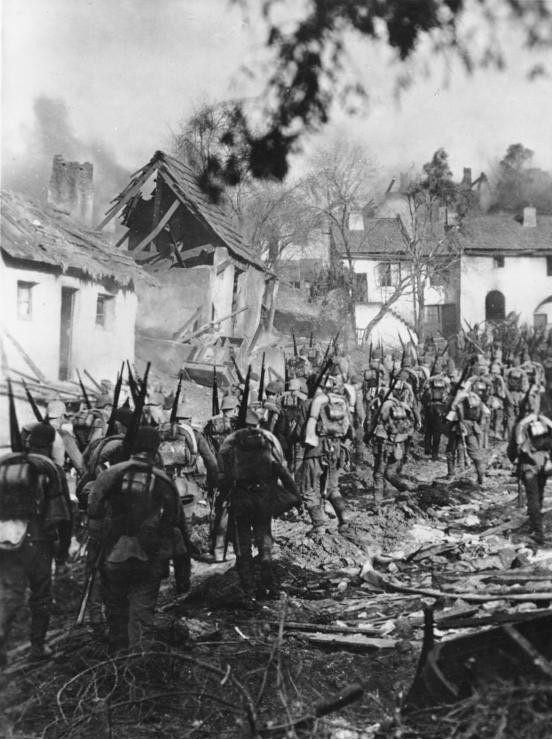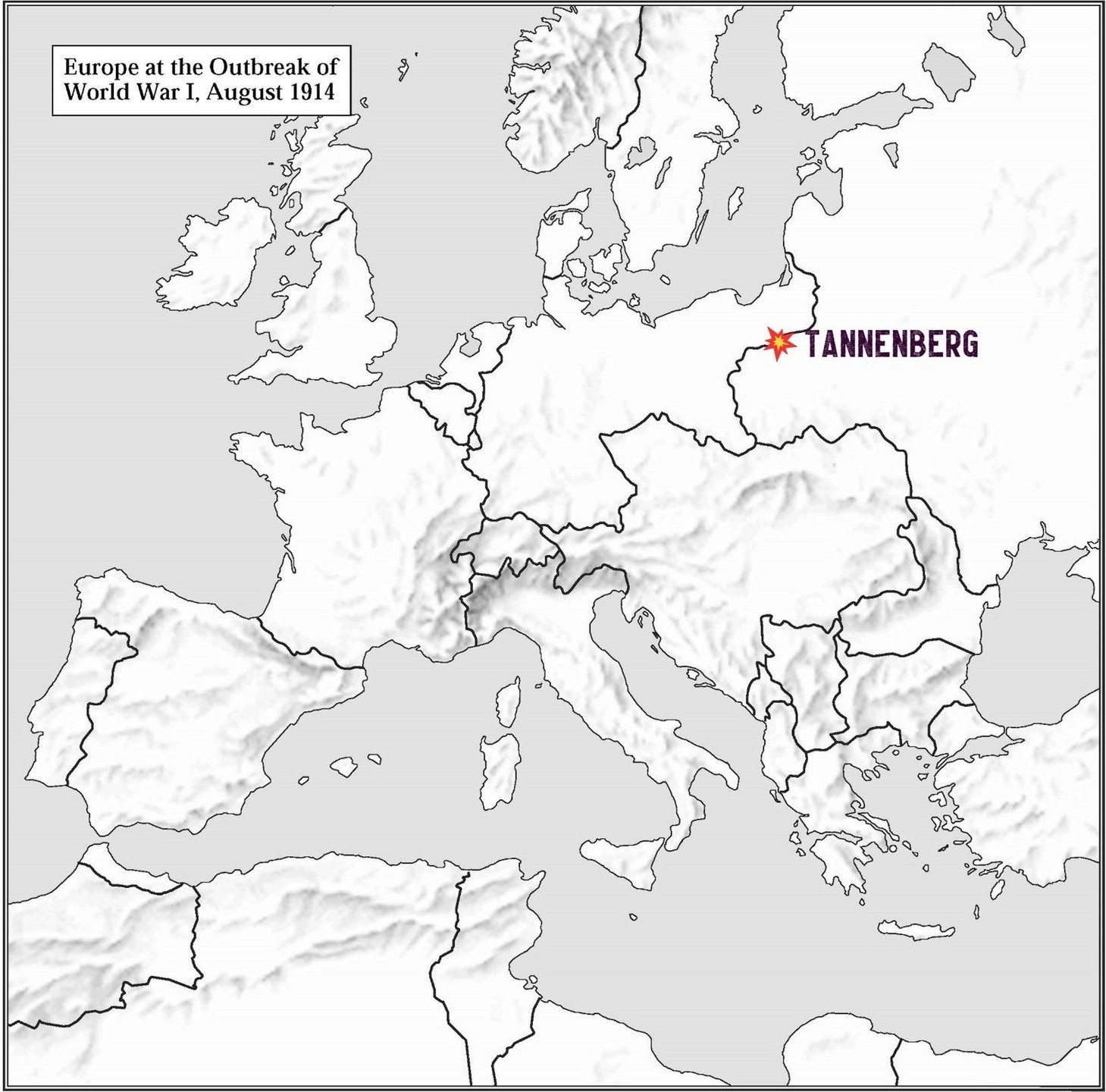The Battle of Tannenberg

The Battle of Tannenberg was fought between Russia and Germany in late August 1914, the first month of World War I and just two months after the assassination of Archduke Franz Ferdinand.
Germany entered the war committed to their "Schlieffen Plan" to avoid fighting on two fronts. The plan was to defeat France first and then focus on Russia. However, Russia’s First and Second Armies invaded Eastern Prussia and were advancing towards Germany, forcing it to respond.
Germany sent its Eighth Army quickly by rail to intercept the Russians. Russia’s armies failed to encrypt their radio transmissions, allowing the Germans to easily intercept their communications and respond. This allowed them to attack and almost completely destroy the Russian Second Army.
Ashamed by his devastating loss, the Russian commanding general, Alexander Samsonov, committed suicide while retreating. Russia lost nearly 250,000 men and much war materials. A series of follow-up battles destroyed most of the First Army as well and kept the Russians off balance until the spring of 1915.

The battle actually took place closer to the town of Allenstein (modern-day Olsztyn). However, the German Field Marshal Paul von Hindenburg named it after Tannenberg, 19 miles to the west, for propaganda reasons. The German Teutonic Knights were defeated at the First Battle of Tannenberg 500 years earlier in 1410.
